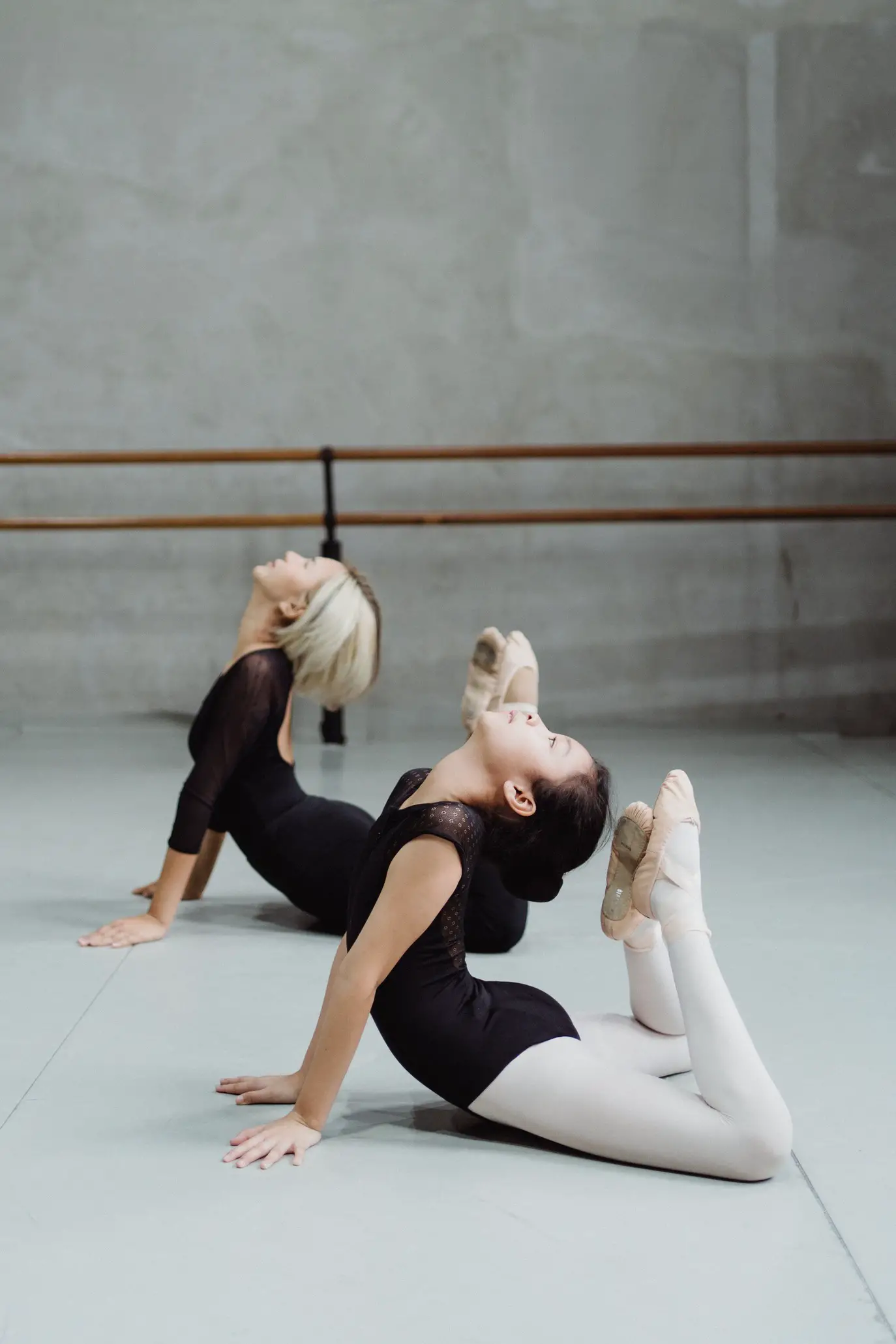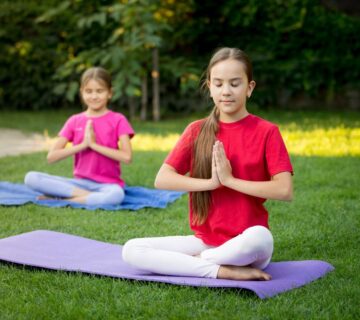Youngsters are little energy-filled containers that are full of imagination and a natural curiosity about the world around them. With its unique combination of breathing techniques, mindfulness exercises, and physical postures, yoga can be a miraculous instrument to help them on their path to self-realization and personal development. Teaching yoga to children transforms you into more than simply a teacher—you become a friend, a guide, and a fellow traveler helping them to grow their own figurative wings.
This piece explores the fascinating field of instructing children in yoga, guiding you as you go out on your own personal journey to inspire the next generation of yogis.
Embrace the Playful Spirit:
Put an end to tedious repetitions and solemn, stiff stances. Embracing children’s natural joyful spirit is the key to using yoga to open their hearts and brains. Imagine entering a world of vivid hues, goofy animal sounds, and imaginative narrative. Your classroom becomes a jungle gym of poses: warrior II becomes an airplane, downward dog becomes a tiger on the prowl, and mountain pose becomes a towering tree. Promote giggling, laughing, and unrestrained exploring. Recall that there are only happy discoveries rather than blunders in the domain of yoga.
Weave Storytelling and Imagination:
Children’s love stories. Create stories with postures and breathing techniques by letting your creativity run wild. Tell stories of majestic birds taking flight on strong wings (arms outstretched in Warrior III), of brave dragon tamers who spew fire (Ujjayi breath! ), or of tranquil turtles finding their center (resting in Child’s Pose). In addition to increasing student participation, storytelling instills in them values such as bravery, equilibrium, and inner serenity.
Focus on Playful Activities:
Forget regulated sequences and rote memorizing. Instead, incorporate enjoyable and interesting activities into your lessons. Keeping kids engaged and active can be achieved through yoga-themed games, partner poses, body-part scavenger hunts, and even making up their own yoga routines. Recall that children absorb new skills and concepts most naturally and effectively when they learn via play.
Sprout Your Wings: A Journey into Kids Yoga Teaching
Children are little vessels of boundless energy, overflowing with imagination and curious about the world beyond their immediate grasp. Yoga, with its blend of postures, breathing exercises, and mindfulness practices, can be a magical tool to guide them on a journey of self-discovery and growth. As a kids yoga teacher, you become more than just an instructor; you become a facilitator, a friend, and a fellow adventurer on their path to sprouting their own metaphorical wings.
This article delves into the exciting world of kids yoga teaching, charting a course for your own personal odyssey as you inspire a generation of young yogis.
Embrace the Playful Spirit:
Forget serious, rigid poses and monotonous repetitions. The key to unlocking children’s hearts and minds through yoga is by embracing their innate playful spirit. Imagine yourself stepping into a world of vibrant colors, silly animal noises, and fantastical storytelling. Your classroom becomes a jungle gym of poses, where downward dog transforms into a prowling tiger, warrior II morphs into a soaring airplane, and mountain pose stands tall like a mighty tree. Encourage laughter, giggles, and uninhibited exploration. Remember, in this land of yoga, there are no mistakes, only joyful discoveries.
Weave Storytelling and Imagination:
Children thrive on stories. Let your imagination take flight and craft narratives that intertwine postures and breathing exercises. Tell tales of brave dragon tamers who breathe fire (Ujjayi breath!), majestic birds who take flight on strong wings (arms outstretched in Warrior III), or peaceful turtles finding their center (resting in Child’s Pose). Storytelling not only enhances engagement but also injects life lessons into the practice, teaching them about courage, balance, and inner peace.
Focus on Playful Activities:
Forget rote memorization and structured sequences. Instead, infuse your classes with fun and engaging activities. Games with yoga poses, partner postures, scavenger hunts for specific body parts, and even creating their own yoga sequences are just a few ways to keep children active and captivated. Remember, learning through play is the most natural and effective way for children to internalize new skills and concepts.
Celebrate Individuality:
Every child is a unique, shining star. As a teacher, embrace and celebrate their individual strengths and differences. Encourage them to explore postures in their own way, modifying as needed, and listening to their own bodies. Avoid comparisons and create a safe space where every child feels comfortable expressing themselves freely.
Nurture Mindfulness and Relaxation:
While we’re all about the giggles and wiggles, don’t forget the calming potential of yoga. Include simple breathing exercises and guided meditations in your classes. Teach them to connect with their breath, listen to their bodies, and cultivate a sense of inner peace. These skills can be invaluable tools for navigating the anxieties and stresses of everyday life.
Sprouting Wings Beyond the Mat:
The lessons learned on the yoga mat shouldn’t stay confined within its boundaries. Encourage children to apply the mindfulness and self-awareness they cultivate in their everyday lives. Guide them to use breathwork to calm during tantrums, practice yoga poses to stay energized, and approach challenges with the courage and confidence they discover through their practice.
Your Journey as a Guide:
Remember, being a kids yoga teacher is more than just knowing poses and sequences. It’s about igniting curiosity, creating a safe space for exploration, and nurturing compassion and awareness. It’s about becoming a supportive guide on their journey of self-discovery, helping them sprout their own wings and soar as high as their imaginations can take them.
Embrace the challenges: There will be days when energy levels are high, attention spans short, and frustration levels seem to peak. Embrace these moments as opportunities for growth, both for yourself and your students. Be patient, flexible, and resourceful. Remember, laughter and a playful spirit are often the best tools to navigate challenging situations.
Seek inspiration and support: The world of kids yoga is a vibrant community filled with passionate teachers and resources. Connect with other teachers, attend workshops, and explore online resources. Sharing experiences, seeking guidance, and celebrating successes together will enrich your own practice and nourish your journey as a teacher.
Remember, the greatest reward: As you witness children gain confidence, develop self-awareness, and navigate life’s challenges with newfound resilience, you’ll experience the profound joy of knowing that you’ve played a part in their journey. Each giggle, each moment of focus, each spark of self-discovery is a testament to the magic that unfolds when you guide children through the practice of yoga.
So, dear aspiring kids yoga teacher, step into the classroom, unleash your inner child, and embark on your own adventure. Embrace the playfulness, the wonder, and the transformative power of yoga. Remember, you are not just teaching poses; you are planting seeds of mindfulness, confidence, and joyful self-expression that will help these little yogis sprout.





No comment